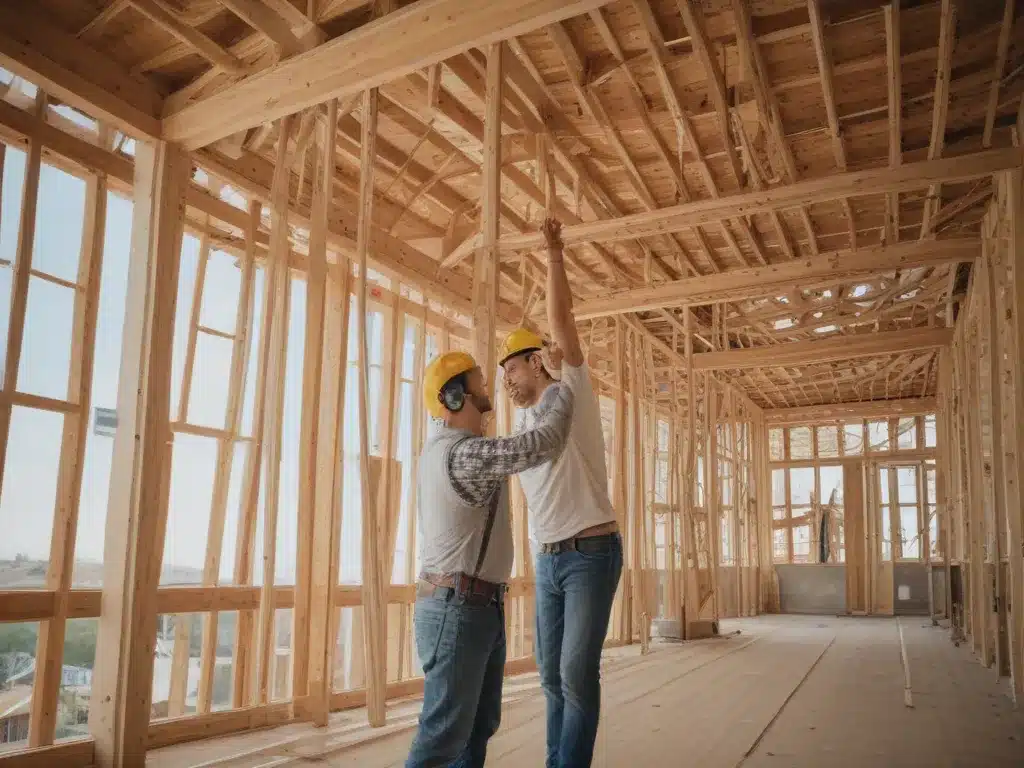
Introduction
Hey there, fellow construction peeps! As someone who’s been in the business for a while, I know firsthand how tough it can be to keep those project costs under control. It’s like a constant game of tetris – trying to fit all the pieces together without going over budget. But fear not, my friends! I’ve got some creative tricks up my sleeve to help you stretch every dollar and maximize your bottom line.
Prioritize Material Sourcing
One of the biggest expenses in any construction project is materials. And let me tell you, those suppliers can be sneaky with their pricing. But don’t worry, I’ve got a few hacks to help you get the best deals:
-
Shop Around: Don’t just go with the first supplier you find. Get quotes from multiple vendors and compare prices. Sometimes, the difference can be huge!
-
Buy in Bulk: If you’ve got multiple projects lined up, consider buying materials in bulk. Most suppliers offer discounts for larger orders, and you can save a pretty penny in the long run.
-
Look for Surplus Sales: Keep an eye out for surplus sales or liquidation events. You can often find high-quality materials at a fraction of the cost. Just make sure you inspect them thoroughly before purchasing.
-
Consider Recycled or Repurposed Materials: Not everything has to be brand new. Recycled or repurposed materials can be a cost-effective alternative, and they’re also eco-friendly! Win-win, baby!
Optimize Your Workforce
Your crew is the backbone of any construction project, but let’s be real – labor costs can add up quickly. Here are some ways to make the most of your team without breaking the bank:
-
Cross-Train Your Employees: Having a versatile workforce means you can assign tasks more efficiently and reduce the need for specialized subcontractors. Plus, it’s a great way to keep your team engaged and learning new skills.
-
Offer Performance-Based Incentives: A little motivation can go a long way. Consider offering bonuses or rewards for completing tasks ahead of schedule or under budget. It’ll keep your crew motivated and productive.
-
Embrace Technology: Investing in construction management software or productivity apps may seem like an upfront cost, but it can save you tons of time and money in the long run. Streamlining processes and improving communication can work wonders for efficiency.
-
Outsource Non-Critical Tasks: Sometimes, it’s more cost-effective to outsource certain tasks, like administrative work or specialized services. Just make sure you do your research and find reliable partners.
Lean Construction Principles
If you really want to level up your cost-saving game, consider adopting lean construction principles. This approach focuses on eliminating waste and maximizing value for the customer. Here are a few key elements:
-
Just-in-Time Delivery: By coordinating material deliveries to arrive “just in time” for installation, you can reduce storage costs and minimize waste.
-
Pull Planning: Instead of pushing tasks onto your crew, implement a pull planning system where tasks are “pulled” based on priority and availability of resources. This can help avoid bottlenecks and improve overall workflow.
-
Value Stream Mapping: Map out your entire construction process and identify areas where waste or inefficiencies may be occurring. Then, develop strategies to streamline those processes and cut unnecessary costs.
-
Last Planner System: This collaborative planning system encourages buy-in from all stakeholders and helps ensure tasks are completed as scheduled, reducing delays and rework.
Leverage Technology and Automation
In today’s digital age, there are plenty of technological solutions that can help you save time, money, and headaches. Here are a few examples:
-
Drones and 3D Mapping: Using drones to capture aerial footage and create 3D models of job sites can provide invaluable insights for planning and progress monitoring, reducing the need for manual surveys and calculations.
-
Prefabrication and Modular Construction: By constructing components off-site in a controlled environment, you can optimize material usage, minimize waste, and improve quality control. Plus, it can speed up on-site assembly and reduce labor costs.
-
Building Information Modeling (BIM): BIM software allows you to create detailed 3D models of your projects, facilitating better coordination among trades, reducing rework, and improving overall efficiency.
-
Automated Equipment and Robotics: While the upfront cost may be higher, investing in automated equipment or robotics can significantly reduce labor costs and improve safety on the job site.
Creative Financing Options
Sometimes, even with all the cost-saving strategies in the world, you may still need a little extra funding to get your project off the ground or cover unexpected expenses. Here are some creative financing options to consider:
-
Crowdfunding: Platforms like Kickstarter or Indiegogo can be a great way to raise capital for smaller projects or experimental construction initiatives. Just be sure to offer some enticing rewards to incentivize backers.
-
Peer-to-Peer Lending: With websites like LendingClub or Prosper, you can potentially secure loans from individual investors at competitive rates, bypassing traditional banks.
-
Asset-Based Lending: If you have valuable equipment or machinery, you may be able to leverage those assets as collateral for a loan. Just be careful not to overextend yourself.
-
Joint Ventures or Partnerships: Teaming up with other contractors or investors can help spread the financial burden and risk, while also opening up new opportunities for larger or more complex projects.
Embrace Sustainable Practices
Going green isn’t just good for the planet; it can also be a savvy financial move for your construction business. By implementing sustainable practices, you can reduce waste, improve energy efficiency, and potentially qualify for tax credits or incentives. Here are a few ideas:
-
Renewable Energy Sources: Consider installing solar panels or wind turbines on your job sites or office buildings to generate clean energy and reduce your utility bills.
-
Water Conservation: Implement strategies like rainwater harvesting, greywater recycling, and efficient irrigation systems to minimize water usage and costs.
-
Waste Reduction and Recycling: Develop comprehensive waste management plans to reduce, reuse, and recycle construction materials whenever possible. This can not only save on disposal costs but also generate revenue from selling recyclables.
-
Energy-Efficient Building Practices: Incorporate energy-efficient design principles and materials, such as proper insulation, energy-efficient windows, and LED lighting. While the upfront costs may be higher, the long-term savings on energy bills can be substantial.
By embracing sustainability, you can not only reduce your environmental impact but also position your business as a leader in the green construction movement, potentially attracting eco-conscious clients and gaining a competitive edge.
Conclusion
There you have it, folks – a treasure trove of creative ways to stretch your construction budget and keep those profits rolling in. Remember, it’s all about thinking outside the box, embracing innovation, and never being afraid to try something new. And who knows? Maybe some of these strategies will even inspire you to come up with your own unique cost-saving hacks. So go forth and conquer, my construction comrades! Your wallet (and the planet) will thank you.





